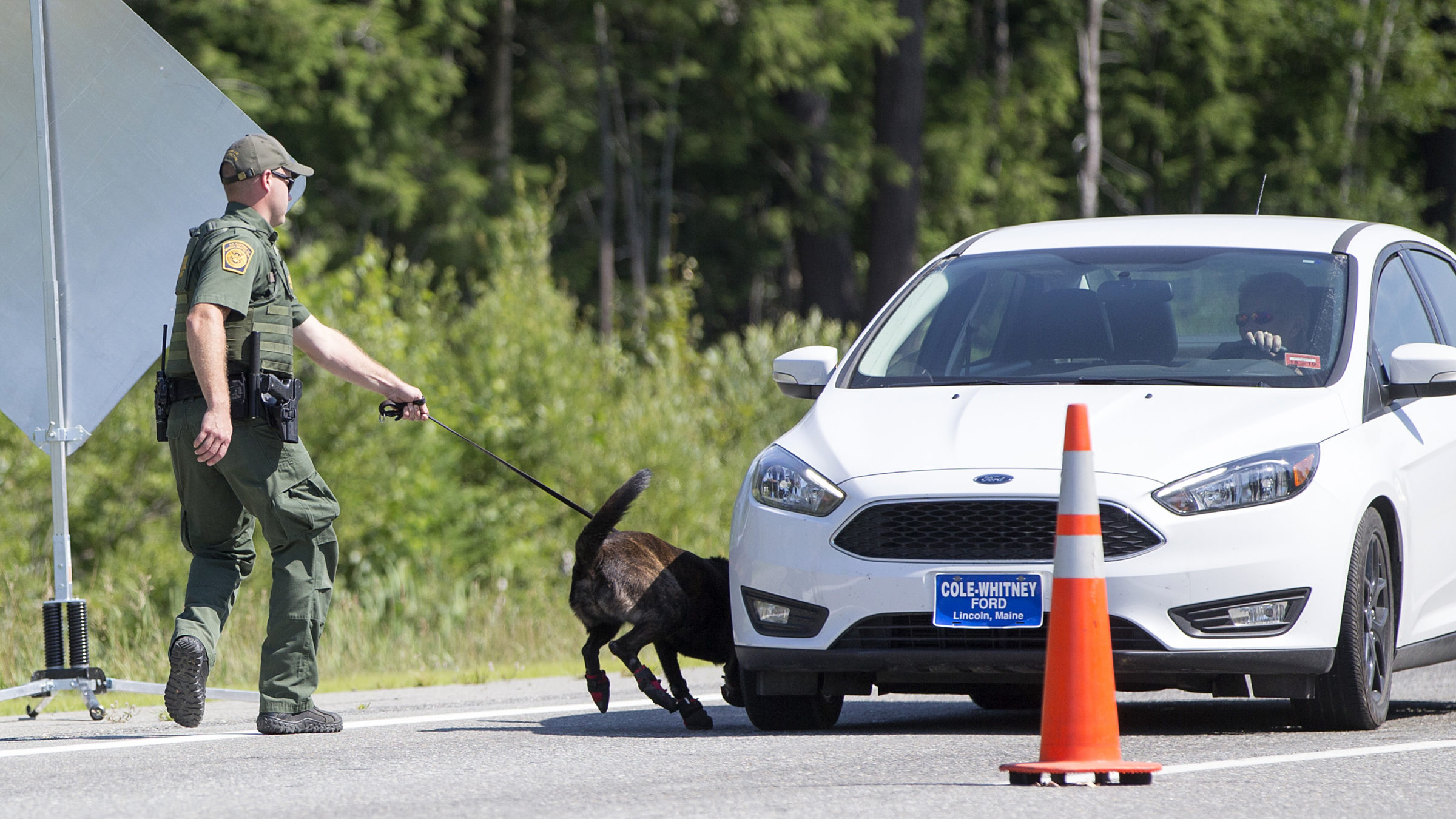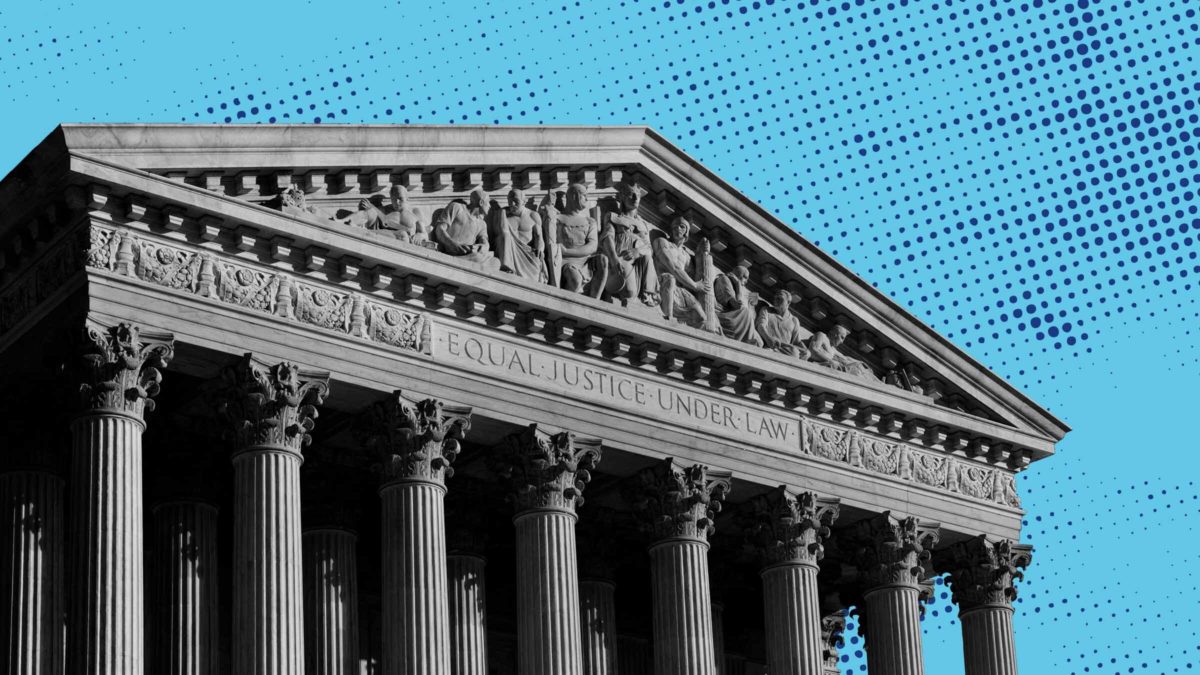In 1946, Congress quietly passed a statute giving U.S. Customs and Border Protection the authority to stop and search all vehicles within a “reasonable distance” from the border. Shortly thereafter, the agency defined that distance as 100 miles from all land borders and coastlines, thus crowning themselves kings of what is now known as the “100-mile zone,” an area in which nearly two-thirds of the U.S. population lives. That regulation, which effectively allows border officers to disregard key Fourth Amendment protections within that area, has remained in place ever since.
The Fourth Amendment is intended to stop law enforcement officers from conducting “unreasonable” searches of “persons, houses, papers, and effects”—basically, people and property. Generally, the Supreme Court has required that officers at least have probable cause—specific reasons to believe someone is committing a crime—before they can search a car without a warrant. The Fourth Amendment also usually requires that police obtain a warrant to search someone’s home, which the Court thinks of as the pinnacle of the constitutional expectation of privacy.
But the Fourth Amendment means very little for anyone who lives within the 100-mile zone. There, instead of protecting people from violations of their constitutional rights, the justices have sanctioned even egregious Fourth Amendment violations by Border Patrol officers. When asked, they happily defer to the agency’s ever-critical mission of capturing and deporting as many undocumented people as possible.
You may have seen this map of the 100-mile border zone making the rounds recently. Did you ever wonder why they chose 100 miles? There must be a good reason for it, right? Well, actually no. Here’s a short thread 🧵on it … pic.twitter.com/FMjVMCOdJI
— Reece Jones (@ReeceJonesUH) June 10, 2022
In 1973, a divided 5-4 Court planted the first landmine for the demolition of the Fourth Amendment in Almeida-Sanchez v. United States. The case, at first blush, sounds good: In it, the Court held that immigration officers searching a car for undocumented people without a warrant or probable cause was unconstitutional. But in a concurrence, Justice Lewis Powell suggested treating the areas around the border differently from the rest of the country. Searches near the border, he wrote, “draw a large measure of justification from the Government’s extraordinary responsibilities and powers with respect to the border.” Thus, he suggested that something analogous to an “area warrant,” which judges issue to city officials to conduct housing code inspections in residential areas, could suspend the need for individualized probable cause within the 100-mile zone.
Powell was also sympathetic to the government’s arguments that deportation is a civil proceeding, and that few migrants faced criminal prosecution for crossing the border without authorization. Because border stops were unlikely to lead to criminal prosecutions, he wrote, border searches are not like “random area searches which are no more than ‘fishing expeditions’ for evidence to support prosecutions.”
Fifty years later, that particular justification for weakening Fourth Amendment protections at the border has become completely irrelevant. In 2005, the federal government launched Operation Streamline in states along the Southwest border, mandating federal criminal prosecution for people who cross the border without authorization. Often, prosecutors would try up to 70 people in a single hearing in order to keep up with the mandate. Between 2013 and 2018, an average of 12,400 people were prosecuted each year under Operation Streamline in Tucson, Arizona.

Just two years after Almeida-Sanchez, the justices who had dissented from that opinion had apparently shed their reservations about shredding the meaning of the Fourth Amendment at the border. In a unanimous decision in United States v. Brignoni-Ponce, the Court lowered the standard for border officers conducting “roving patrols,” where they stop drivers on highways within the 100-mile zone to inquire about citizenship status, to the lowest standard: reasonable suspicion. The justices also explicitly stated that race could a factor when determining the “reasonableness” of an officer’s suspicion, functionally sanctioning the racial profiling practices of border agents in the process.
Then, in 1976, the Court in United States v. Martinez-Fuente upheld military-style checkpoints at which agents, again, randomly stop cars to question people about their immigration status. According to the justices, whose personal experiences passing through Border Patrol checkpoints were presumably limited, these encounters aren’t as intrusive as traditional law enforcement stops and thus didn’t require “individualized suspicion” at all. In dissent, Justice William Brennan, joined by Justice Thurgood Marshall, called the decision an “evisceration” of Fourth Amendment protections.
The Supreme Court has even extended the leeway that it grants border officers to run-of-the-mill cops in states like Arizona and Texas. In 2012, the Court in Arizona v. United States partially upheld SB1070, an Arizona law that deputized local law enforcement to enforce federal immigration law by allowing them to ask about the immigration status of any detained person they suspect is undocumented. In doing so, the Court enabled state law enforcement cops to engage same racial profiling that has become routine amongst immigration officers.
The common thread in all of these decisions is deference to government agents policing the border, a place the Court has characterized as “qualitatively different” than the rest of the country. But as Justice Sonia Sotomayor pointed out in her dissent in Egbert v. Boule, a case from this term, the Court’s hands-off approach to routine civil rights violations has stretched “national-security concerns beyond recognition” and fueled blatant misconduct in the process.
What this means for indigenous and Latinx people living within the 100-mile zone is that they are doubly-policed, both by cops and immigration officers, regardless of their citizenship status. For those who live in rural areas closest to the border, daily commutes to work or school often require passing through militarized checkpoints with armed agents. Although Border Patrol policies purport to dictate that agents will stay away from “protected areas” like schools or hospitals, agents still erect checkpoints at cruelly strategic positions en route to such places, forcing people to choose between obtaining lifesaving care and keeping their families intact.
Neither the 100-mile zone nor the Border Patrol abuses within it have deterred the regular flow of migration. By choosing not to rein in this rogue agency, the Court has made itself complicit in the criminalization of migration and the racial discrimination that flows from it.

